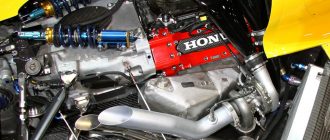When Was the First Car With an Engine Made?
The First Steam-Powered Cars
The first cars powered by steam engines were developed in the late 18th century. In 1769, Nicolas-Joseph Cugnot invented a steam-powered tricycle that could carry four people. However, this vehicle was too heavy and slow to be practical. In 1803, Richard Trevithick built a steam-powered carriage that could travel at speeds of up to 15 miles per hour. However, this carriage was also too heavy and expensive to be commercially successful.
The First Internal Combustion Engine Cars
The first car powered by an internal combustion engine was developed in 1885 by Karl Benz. This vehicle had a four-stroke, single-cylinder engine that produced one horsepower. The Benz Patent-Motorwagen Number 1 was a three-wheeled vehicle that could travel at speeds of up to 10 miles per hour. It is considered to be the first true automobile.
The First Mass-Produced Cars
The first mass-produced car was the Ford Model T, which was introduced in 1908. This vehicle was powered by a four-cylinder, 20-horsepower engine and could travel at speeds of up to 45 miles per hour. The Model T was a huge success, and by 1915, Ford was producing over 1 million vehicles per year.
The Development of the Modern Car
The early automobiles were very basic vehicles. They had no roofs, no windows, and no suspensions. However, over time, cars became more sophisticated and comfortable. In the 1920s, closed cars with all-weather protection became popular. In the 1930s, cars began to be equipped with automatic transmissions and other features that made them easier to drive. In the 1950s, cars began to be equipped with powerful engines and sleek designs that made them more appealing to consumers.
The Future of the Automobile
The automobile has come a long way since its humble beginnings in the late 18th century. Today, cars are an essential part of our lives. They provide us with transportation, convenience, and freedom. As technology continues to develop, cars will become even more advanced and efficient. In the future, cars may be powered by alternative fuels, such as electricity or hydrogen. They may also be equipped with self-driving features that will make them even safer and easier to use.




